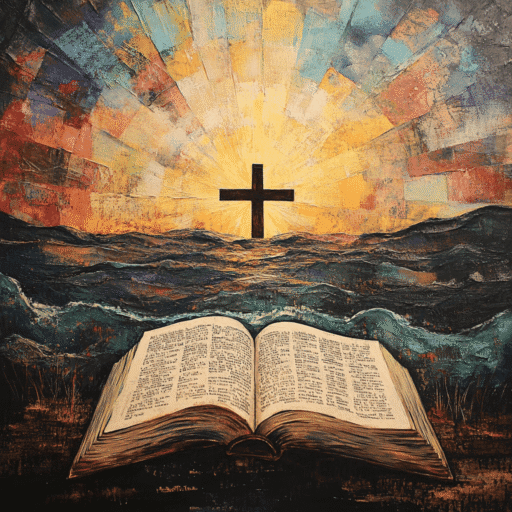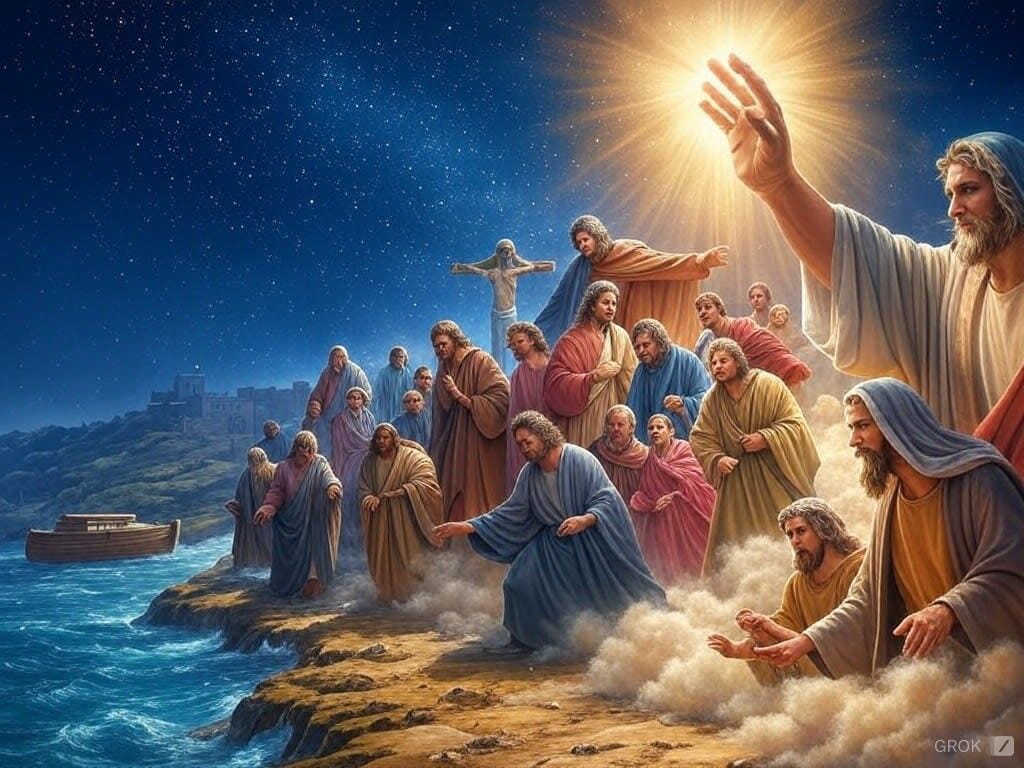Prophecy in the Bible offers profound insights into God’s sovereign will. These divine messages are usually delivered through prophets. They foretell events, warn of judgments, and promise hope. Fulfilled prophecies span from immediate fulfillments to long-term eschatological visions. From Old Testament declarations to New Testament revelations, prophecy builds faith. Prophecy in the Bible shows God’s control over all history.
In this article, we explore key aspects of biblical prophecy. The analysis draws from sacred texts to highlight prophetic purpose and impact. Each section includes an overview and essential points to guide your study. As you deepen your study of the Bible, prophecy can strengthen your walk with God. Moreover, they connect ancient words to modern realities. As a result, they inspire trust in His unfolding plan. Let’s start with the basics of prophecy in the Bible.
1. Introduction to Prophecy in the Bible
Overview of Prophecy in the Bible
Prophecy in the Bible serves as God’s tool to speak to us. These prophecies often involve telling about events in advance to guide, correct, or encourage His people. The messages come through chosen individuals who speak on God’s behalf. Sometimes prophecy in the Bible blends warnings with promises of restoration. For example, they can emphasize obedience and faith amid uncertainty. As a result, they reveal God’s timeless character.
Key Points of Prophecy in the Bible
- Prophecy in the Bible begins with God’s words to early figures. For instance, God promises Abraham he will receive blessings and be great nation in Genesis 12:1-3. This sets a pattern where divine revelations shape human destiny and covenant relationships. Moreover, it shows how personal calls lead to broader impacts. For instance, it encourages believers to heed God’s voice in their own lives.
- Major prophets like Isaiah, Jeremiah, and Ezekiel wrote much of biblical prophecy. They deliver messages during times of crisis for Israel and Judah. Their words often mix judgments in their time with future hope. A major theme of their prophecy is restoring Israel after exile. Also, they highlight God’s justice and mercy. As a result, they provide comfort in difficult eras.
- Minor prophets include Hosea, Joel, and Micah. They offer powerful prophecies focusing on social justice, repentance, and end-time visions. These shorter books work with the majors by focusing on one issue like idolatry. Furthermore, they call for a true and full return to God. Moreover, they remind us that small voices can carry big truths.
- New Testament prophecy shifts to fulfillment in Christ and warnings for the church. Apostles like Paul and John build on the Old Testament to guide early believers. Moreover, they stress being ready for Jesus’ return. Thus, they bridge old and new covenants. The book of Revelation reflects an apocalyptic genre of prophecy in the Bible.
2. Prophets of Bible Timeline
Overview of Prophets in Biblical Prophecy
The prophets of Bible timeline spans hundreds of years. It ranges from early figures like Samuel to post-exile voices like Malachi. Tracking prophets in time order helps trace how God spoke about the future through His messengers. For instance, it shows shifts from kingdom warnings to restoration hopes. Thus, it helps us to understand what a prophecy means in history.
Key Timeline Points in Prophecy
- Early prophets like Moses and Samuel appear around 1400-1000 BC. They lay a base with laws and guidance for Israel’s monarchy. Moses foretells a future prophet in Deuteronomy 18:15-18, pointing ahead to Jesus. Moreover, Samuel anoints kings and warns of disobedience. As a result, they show prophecy as God’s direct line to leaders.
- The writing prophets come during Assyria’s rise around 800-700 BC. Amos and Hosea address Israel’s sins. Amos condemns social injustice. Hosea uses his marriage as a metaphor for God’s love. Also, they urge repentance to avoid captivity. Also, their messages relate to modern calls for equity.
- Exilic prophets like Ezekiel and Daniel minister during Babylon’s high point in 600-500 BC. They had prophetic visions of hope amid exile. Ezekiel’s dramatic symbols reinforce God is not just at the temple. He is everywhere. Furthermore, Daniel’s dreams shows empires rise and fall. Thus, they sustain faith in foreign lands.
- Post-exile prophets include Haggai, Zechariah, and Malachi around 500-400 BC. Their prophecies focus on rebuilding and moral renewal. Haggai motivates temple reconstruction, while Malachi critiques corrupt practices. Moreover, Zechariah points to messianic peace. As a result, they bridge to New Testament expectations.
3. Prophecies of Jesus in Isaiah
Overview of Messianic Prophecy in Isaiah
Prophecies of Jesus in Isaiah show Him as the Messiah. Isaiah describes the Messiah as both a suffering servant and conquering king. These prophecies span chapters and blend both near and far fulfillments. These verses comfort exiles while pointing to ultimate redemption. For example, they emphasize humility and victory. Furthermore, they enrich our view of Christ’s mission.
Key Insights on Jesus’ Prophecy in the Bible

- Isaiah 7:14 foretells a virgin birth of Immanuel or “God with us.” It stands fulfilled in Jesus’ birth as recorded in Matthew 1:23. This prophecy reassured King Ahaz during threats but extends to eternal hope. Moreover, it highlights God’s intimate presence. For instance, it reminds us that God wants to know each of us personally.
- Isaiah 53 depicts the suffering servant. He bears sins and brings peace through pain. This chapter describes Jesus’ crucifixion hundreds of years in advance. The record of the fulfillment is in the four Gospels. In addition, it teaches that His punishment takes the place of ours. As a result, it deepens appreciation for the cross.
- Isaiah 9:6-7 promises a child born as Wonderful Counselor, Mighty God, and Prince of Peace. He will rule forever on David’s throne. This messianic vision combines human birth with divine attributes. Furthermore, it assures justice and righteousness. Therefore, it inspires hope in Christ’s kingdom.
- Isaiah 11:1-5 envisions a shoot from Jesse’s stump. It is a relative who has wisdom and fear of the Lord. He judges with equity. This points to Jesus’ righteous reign and care for the poor. Moreover, it contrasts worldly power with spiritual insight. For example, it calls believers to also show such leadership.
4. Micah 5:2 and Other Messianic Prophecy in the Bible
Overview of Messianic Prophecy in the Bible
Micah 5:2 predicts the Messiah’s birth in Bethlehem. It was a small town but destined for greatness through divine choice. This and similar prophecies pinpoint details of Jesus’ life and ministry. For instance, they build anticipation for fulfillment. Thus, they confirm Scripture is true.
Key Messianic Prophecy in the Bible
- Micah 5:2 declares a ruler from Bethlehem whose origins are ancient. Jesus, the Son of God, fulfilled this by being born a human as per Matthew 2:1-6. This highlights God’s use of humble beginnings for eternal impact. Moreover, it connects to David’s family line. As a result, it shows prophecy is 100% true.
- Psalm 22:16-18 predicts crucifixion details of pierced hands and cast lots for his robe. David writes from personal pain, yet it mirrors the cross. In addition, it shows suffering’s redemptive purpose. For example, it comforts those in pain with shared experience.
- Zechariah 9:9 portrays the king riding a donkey humbly, fulfilled on Palm Sunday in Matthew 21:1-11. This contrasts war heroes with peaceful entry. Furthermore, it symbolizes that salvation is easy to get. Therefore, it invites humble reception of Christ and His grace.
- Jeremiah 31:15 laments Rachel weeping for children. This foreshadowed Herod’s murder of young children in Matthew 2:16-18. This ties sorrow to messianic arrival. Moreover, it promises eventual comfort. As a result, it addresses grief with hope.
5. Daniel’s 70 Weeks
Overview of Daniel’s Prophetic Timeline
In Daniel 9:24-27 he outlines a prophetic timeline of 70 weeks for Israel’s redemption. This period involves decreed periods leading to Messiah’s coming and end times. This complex vision interprets weeks as years, blending historical and future events. For example, it predicts Jerusalem’s rebuilding and ultimate desolation. Consequently, it fuels discussions on the study of the end times.
Key Insights into Daniel’s Prophecy in the Bible
- The prophecy begins with 69 weeks from Artaxerxes’ decree to rebuild Jerusalem. It ends with the Messiah’s arrival, aligning with the start of Jesus’ ministry. This calculation uses 360-day prophetic years for precision. Moreover, it foretells His cutoff after this period. For instance, it matches historical timelines accurately.
- The 70th week involves a covenant with many. The abomination of desolation brakes it midway, and the tribulation gets worse. Scholars debate its fulfillment, often linking to Antichrist figures. In addition, it warns of intense trials before resolution. As a result, it urges watchfulness.
- The anointed one’s role includes ending sin and bringing eternal goodness. Christ fulfills this role providing atonement for iniquity. Therefore, it assures full restoration. He will return to defeat sin and judge everyone.
- Gaps between weeks allow for church age insertion, a common dispensational view. This interprets the pause after Messiah’s rejection. Moreover, it connects to end-time resumption. For example, it explains current prophetic lull.
6. Ezekiel 38 and End Times Visions in the Bible
Overview of Ezekiel’s End-Time Prophecy in the Bible
Ezekiel 38 describes a northern alliance invading Israel. They meet God’s supernatural defense in a final battle. This chapter fits broader end times visions of conflict and divine intervention. For instance, it emphasizes God’s glory amid chaos. Thus, it reassures believers of ultimate victory.
Key Prophetic Visions in Ezekiel
- Gog from Magog leads forces against restored Israel in Ezekiel 38:1-16. This team includes Persia, Cush, and Put. These are likely the modern day nations of Libya, Sudan, and Iran. Moreover, it occurs when Israel has peace. As a result, it shows God’s judgment on Israel’s enemies.
- Divine response includes earthquakes, hail, and self-destruction among invaders in Ezekiel 38:17-23. This reveals God’s power to nations much like the time of Exodus. This supernatural defeat glorifies Him without human aid. In addition, it leads to praise of Yahweh. For example, it parallels Armageddon themes.
- Cleanup and burial in Hamon-gog valley take seven months in Ezekiel 39:11-16. This involves thorough purging necessary for a holy nation. Birds and beasts feast on remains, echoing Revelation. Furthermore, it marks a turning point for Israel. Therefore, it highlights renewal after trial.
- Israel’s spiritual awakening follows, with God pouring out His Spirit. This restores Jacob and gathers exiles. Moreover, it fulfills covenant promises. As a result, it points to 1,000 year peace.
7. Signs of the End Times in the Bible
Overview of Biblical End-Time Signs
Signs of the end times in the Bible include wars, famines, earthquakes, and false christs. These indicators signal increasing birth pains before Christ’s return. For example, they urge vigilance and preparedness. Consequently, they motivate holy living.
Key Signs from End Times Prophecy in the Bible
- Wars and rumors of wars mark the beginning, with nation rising against nation in Matthew 24:6-7. This reflects global conflicts as precursors, not the end itself. Moreover, Jesus advises not to be alarmed. For instance, it mirrors current geopolitical tensions.
- Famines and earthquakes intensify like labor pains, per Matthew 24:7-8. These natural disasters signal creation’s groan. In addition, they call for endurance. As a result, they remind us of temporary suffering before glory.
- False christs and prophets deceive many with signs in Matthew 24:4-5, 11. This warns against misleading teachings. Furthermore, it stresses discernment through Scripture. Therefore, it protects faith in turbulent times.
- Persecution of believers leads to testimony opportunities in Matthew 24:9-14. Nations hate disciples for Jesus’ name. Moreover, the Gospel spreads worldwide before the end. For example, it encourages bold witness.
8. Bible End Times Timeline
Overview of the End Times Timeline in Prophecy
The Bible end times timeline outlines sequences from tribulation to Jesus’ 1,000 year reign on Earth. The information is drawn from Daniel, Matthew, and Revelation. This framework helps navigate prophetic events. For instance, it starts with seals and ends with new creation. Thus, it provides hope amid details.
Key Timeline Elements in Biblical Prophecy
- The tribulation begins with Antichrist’s rise and seven seals in Revelation 6. This will be a time of conquest, war, famine, and death. This seven-year period intensifies judgments. Moreover, it fulfills Daniel’s 70th week. As a result, it tests global faith.
- Mid-tribulation the antichrist defiles the temple, per Daniel 9:27 and Matthew 24:15. The beast demands worship, marking great tribulation. In addition, it triggers flight for safety. For example, it echoes historical evil doings.
- Armageddon gathers nations against Israel in Revelation 16:16, leading to Christ’s return. This battle sees divine victory over evil. Furthermore, it leads to a 1,000 year reign. Therefore, it assures justice’s triumph.
- The millennium features Christ’s 1,000 year rule in Revelation 20:1-6. Satan is bound and saints reign with Jesus. Peace and righteousness prevail. Moreover, it fulfills kingdom promises. As a result, it previews the eternal state.
9. Rapture Prophecies
Overview of Rapture in Biblical Prophecy
Rapture prophecies describe believers’ meeting Christ in the air (1 Thessalonians 4:17). This event is before or during tribulation. People debate and disagree when it will occur. Either way, it promises comfort and reunion. In addition, since the time is unsure, we should always be ready.
Key Rapture Prophecy in the Bible
- The Lord descends with a shout and trumpet in 1 Thessalonians 4:16. He raises the dead in Christ first, then living believers. This harpazo or snatching away happens in a moment. Moreover, it reunites with loved ones. Moreover, it offers hope for those who believe. On the other hand it is a time of grief for those who do not believe.
- Since Jesus could come at any time it urges always watching per 1 Thessalonians 5:1-6. Believers avoid surprise like thieves in night. In addition, it calls for sobriety. As a result, it shapes daily living.
- Pretribulation view places rapture before wrath. Many base this interpretation on passages like 1 Thessalonians 5:9 and Revelation 3:10. God spares church from trials. Furthermore, it aligns with Jewish wedding analogies. Therefore, it emphasizes escape.
- Post-tribulation perspective sees rapture at second coming, after tribulation in Matthew 24:29-31. Saints endure but triumph. Moreover, it unifies end events. For example, it stresses perseverance.
10. End Time Prophecies Being Fulfilled
Overview of Fulfilled End-Time Prophecies
End time prophecies being fulfilled appear in current events aligning with Scripture. The signs of global unrest and new technologies make some people uneasy. Recent developments, like AI and Middle East tensions, echo biblical warnings. For example, they suggest nearing climax. Thus, they call for discernment.
Key Modern Fulfillments of Prophecy in the Bible
- Israel’s regathering since 1948 fulfills Ezekiel 37’s dry bones vision. They have been restoring the nation for decades after centuries of dispersion. This modern miracle sets the stage for further prophecies. Moreover, it draws international focus. As a result, it signals prophetic acceleration.
- Increasing natural disasters and wars match Matthew 24’s birth pains. It seems there are more frequent earthquakes and conflicts every year. Climate shifts and geopolitical strife amplify these signs. In addition, they urge preparation. For instance, they reflect creation’s groan in Romans 8.
- Technological strides like AI parallel Revelation’s image of the beast. In particular, the way AI is enabling more control and deception. Recent advancements in surveillance and robotics fit this. Furthermore, they raise ethical concerns. Therefore, they warrant biblical evaluation.
- Gospel spread via digital means fulfills Matthew 24:14, reaching remote areas instantly. Missions and media accelerate this. Moreover, it precedes the end. As a result, it mobilizes evangelism.
11. End Times Prophecy News

Overview of Current End Times Prophecy Updates
End times prophecy news tracks current events through a biblical lens. Some 2025 updates highlight AI, Israel-Iran tensions, and global shifts. Christian news sources and prophecy podcasts interpret some events as prophetic signs. Everyone should be careful to verify all sources consumed connect news to Scripture. It is important to separate opinion from the hard facts of prophecy in the Bible.
Key Updates in Prophecy News
- Many preachers come up with lists of prophetic signs for 2025. Most include new developments in technology and geopolitics, urging watchfulness. These align with Bible warnings of deception and wars. Moreover, they inspire prayerful readiness. For instance, they link to Revelation’s end-time scenarios.
- The Israel-Iran war in 2025 put a focus on Ezekiel 38’s prophecy in the Bible. Greg Laurie suggests escalation could lead to prophesied invasions. In addition, it heightens Middle East focus. As a result, it calls for intercession.
- AI and weapon advancements feature in March 2025 updates, echoing Daniel’s knowledge increase. These innovations pose ethical dilemmas. Furthermore, they fit beast system descriptions. Therefore, they warrant biblical scrutiny.
- Global conflicts and big tech suggest accelerating timelines, per Brett Meador. These rumble with signs of the end-times. Moreover, they connect to the seals in the book of Revelation. These kinds of signs should motivate study.
12. Book of Revelation
Overview of Revelation’s Apocalyptic Prophecy
The Book of Revelation is the final book of the Bible. It unveils prophecy in the Bible through vivid apocalyptic visions. The majority mark end-time events and Christ’s ultimate victory. Furthermore, it combines warnings, judgments, and promises of eternal life for believers. For example, it addresses churches, unveils cosmic battles, and a new heaven and earth. As a result, it anchors hope in God’s triumph over evil.
Key Apocalyptic Prophecy in the Bible
- The seven churches receive letters in Revelation 2-3. These are examples of prophecy in the Bible that urge repentance and perseverance. Jesus gave these to the churches as encouragement against false teaching and persecution. Each message, was to a real church of that time and long fulfilled. However, it also applies to modern churches facing similar struggles. For instance, it calls us to remain faithful under pressure.
- The seven seals, trumpets, and bowls unfold as judgments in Revelation 6-16. They represent global catastrophes like war, famine, and plagues. These prophecies in the Bible signal God’s wrath on unrepentant nations. It all culminates in the battle of Armageddon. In addition, they contrast with mercy for the redeemed. Thus, they urge readiness for Christ’s return.
- The beast and false prophet deceive the world in Revelation 13. They enforce worship through a mark, aligning with end-time prophecies being fulfilled. This system opposes God’s kingdom, using economic and spiritual control. Furthermore, it warns of deception’s allure. As a result, it emphasizes discernment through Scripture.
- The New Jerusalem descends in Revelation 21-22. This fulfills prophecy in the Bible with a restored creation where God lives with His people. No more tears, death, or pain mark this eternal city of light. Moreover, it fulfills messianic hopes from Isaiah and Ezekiel. For example, it inspires longing for God’s perfect kingdom.
Conclusion
Prophecy is one of the 10 essential Bible topics you need to know. These divine revelations invite us to trust God’s master plan amid uncertainty. From messianic fulfillments to end-time warnings, they weave hope and urgency. Moreover, they inspire us to always be ready for Jesus’ return. For example, consider how a prophecy speaks to your life and share it for encouragement. Ultimately, let these words guide you toward unwavering faith.
For further study click the link to watch Chuck Missler teach Prophecy 101 on youtube.



